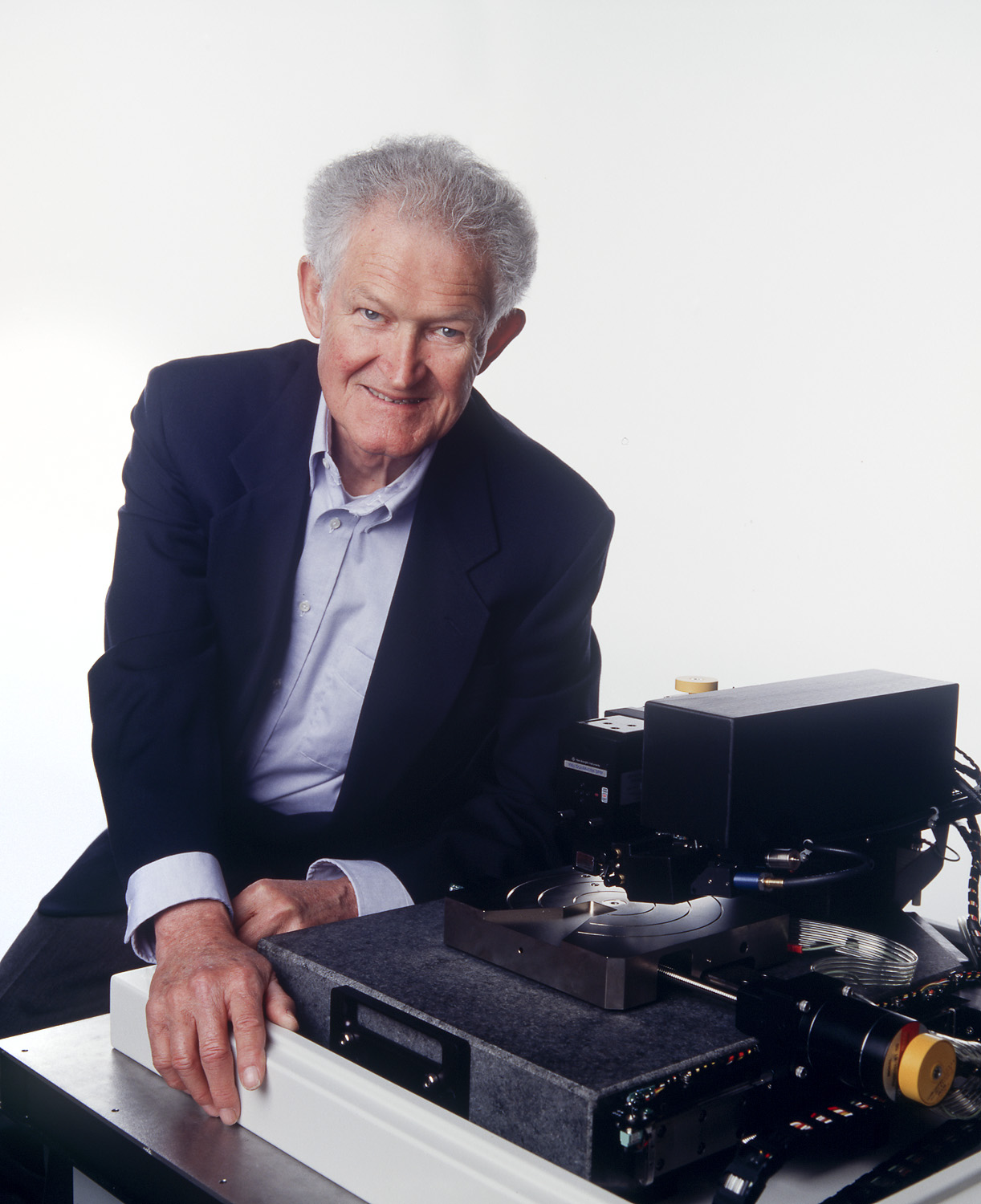Applied physics professor and Leland T. Edwards Professor of Engineering, Emeritus Calvin Forrest Quate Ph.D. ’50 — who invented advanced microscopes — died at his home in Menlo Park on July 6 at the age of 95.
Working at Bell Laboratories in the 1950s, Quate researched high-frequency radio waves, or microwaves. Along with colleague C. Chapin Cutler, Quate tested electron beams projected through moving waves. This led the two to become famous for the Cutler-Quate experiment, with Quate being elected to the National Academy of Engineering, the National Academy of Sciences and Britain’s Royal Society, while also receiving accolades like the National Medal of Science, the Rank Prize for Opto-Electronics, the Institute of Electrical and Electronics Engineers’ Medal of Honor and the Kavli Prize.
Quate’s career at Stanford was extensive. He served as associate dean of the School of Humanities and Science, as chair of the electrical engineering department and two terms as chair of the applied physics department.
Quate earned a degree in electrical engineering from the University of Utah in 1944. After graduation, he planned to work at General Electric, but was asked by the Army Corps of Engineers to work at Oak Ridge National Laboratory, a department of the Manhattan Project that specialized in producing and separating uranium and plutonium in order to develop nuclear weapons. In an interview with the Kavli Foundation, Quate recalled that, after leaving Oak Ridge to complete basic Navy training at Bowdoin College in Maine, he was “walking down the Bowdoin campus steps when the news came out that an atomic bomb had been dropped on Hiroshima.”
In 1960, Quate joined Sandia Corporation, where he was appointed vice president and director of research.
During his professorship at Stanford, Quate created the atomic force microscope and propelled a multi-billion dollar nanotechnology industry with students and other faculty at the applied physics and electrical engineering departments.
“His approach to the work he did in these positions [at Stanford] was vintage Cal – deep thoughts and few words,” former School of Engineering dean Jim Gibbons told Stanford News.
“His position on most matters of academic administration can be stated in two short sentences: ‘Do we need to do this?’ or ‘I’ll do it,’” Gibbons said. “I felt honored to know him and I will miss him greatly.”
Quate was born on Dec. 7, 1923 in Baker, Nevada, a small desert town where he rode on horseback with his friends and tended to his family’s sheep. He and his brothers wrote their names, with the smoke of their oil lamps, on the ceiling of the Lehman Caves of Great Basin National Park in 1927. Until age 11, Quate’s schooling took place in a one-room schoolhouse.
He often sought to find a balance between nature and academics, taking his students kayaking, camping and skiing in and going on annual, week-long backpacking trips with his childhood friends.
He is survived by his wife of 23 years, Arnice Pearl Streit, a former associate dean for the School of Humanities and Sciences, and their four daughters.
Memorial donations can be made in Quate’s name to the applied physics and electrical engineering departments. A private remembrance is to be held by Quate’s family. The University is also planning a private memorial service open to the public, the details of which will be announced.
Contact Leily Rezvani at lrezvani ‘at’ stanford.edu.
